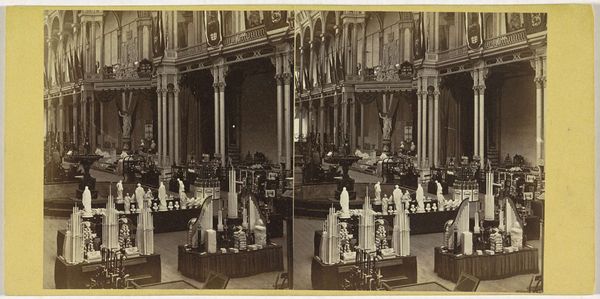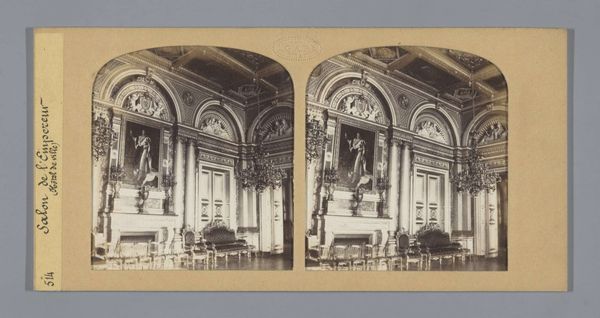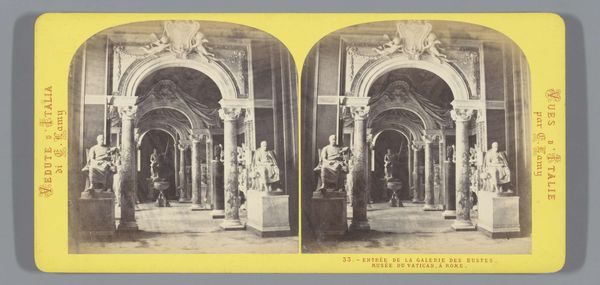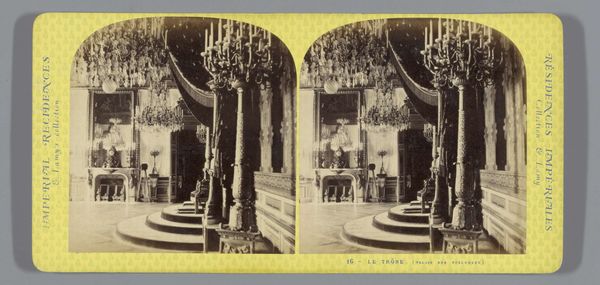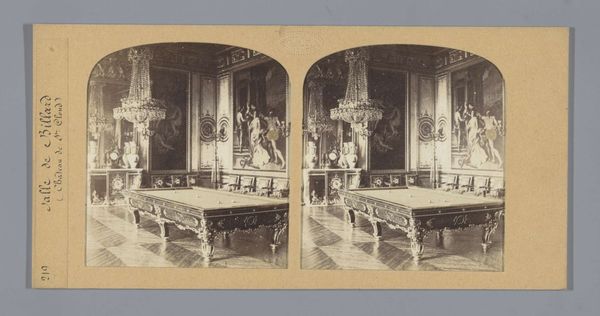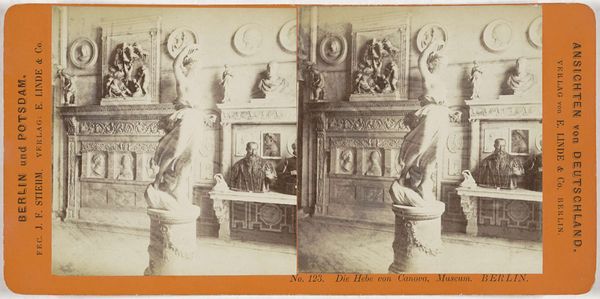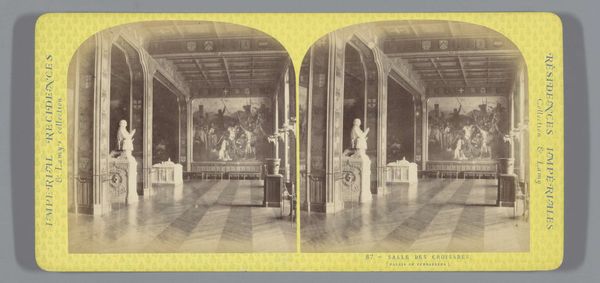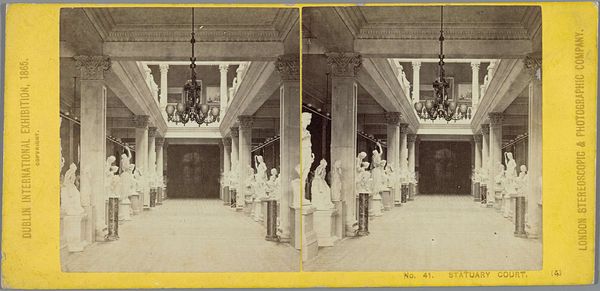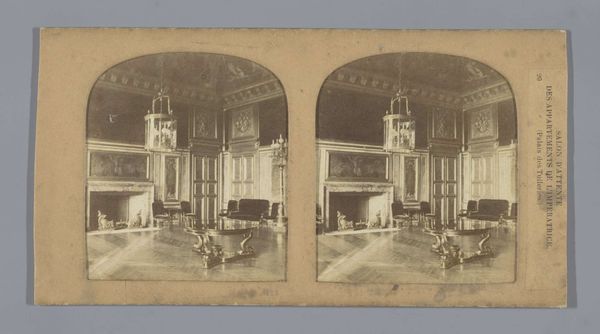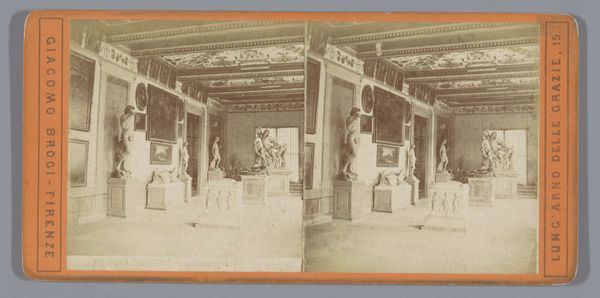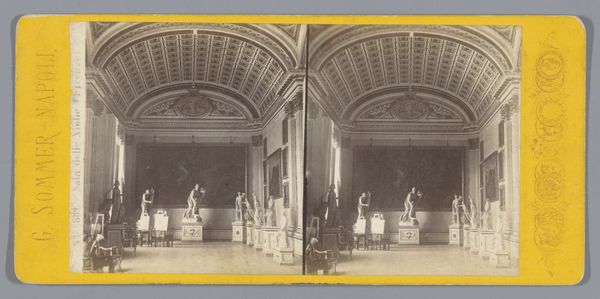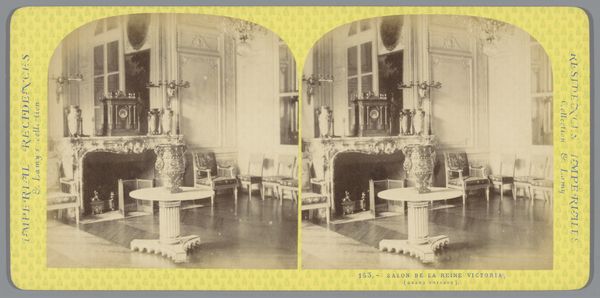
Bustes en andere objecten bij de Tentoonstelling voor Nationale Nijverheid en Kunst in het Paleis voor Volksvlijt, Amsterdam 1866
0:00
0:00
Dimensions: height 82 mm, width 74 mm, height 82 mm, width 73 mm, height 85 mm, width 173 mm
Copyright: Rijks Museum: Open Domain
Curator: This albumen print, titled "Bustes en andere objecten bij de Tentoonstelling voor Nationale Nijverheid en Kunst in het Paleis voor Volksvlijt, Amsterdam," made anonymously around 1866, gives us a glimpse into a world of national ambition on display. Editor: The photograph, viewed as a stereo card, almost feels staged, doesn’t it? The stark lighting and rigid lines amplify this imposing emptiness. Even the lone figure looks strangely posed, rather than naturally seated. There’s an eerie feeling despite the grand architecture. Curator: The photographer has carefully constructed the shot for perspective viewing, playing with Neoclassical symbols of power and artistic achievement. The sculptures of busts reference wisdom, achievement, and a classical, idealized past, set against a backdrop showcasing national industriousness. Notice how the statues, rendered in white against the dark curtain backdrop, command our attention. This sharp contrast enhances their almost ethereal quality. Editor: Yes, and I find myself wondering about the 'Volksvlijt’ or People’s Diligence reflected here. It’s curious to consider whose industry is being celebrated. While classical statuary embodies elitist values, the lack of working-class figures and presence of just one seemingly bourgeois male makes me question its message. I want to consider the social divisions of that era: class, gender, and labor. Who were considered the key figures of this so-called National Industry? Who was missing? Curator: The choice of busts, rooted in ancient Roman and Greek ideals, would signal to viewers in 1866 an aspiration toward high culture and enduring legacy, linking Dutch national identity to this heritage. Editor: It is this precise tension – between an idealized past and an exclusive present – that intrigues me the most. Images, just as cultural symbols and the myths attached to them, often hide as much as they reveal. That staged look conveys manufactured narrative that can also speak volumes about social context of exclusion and oppression. Curator: Indeed, exploring how such visual language can evoke particular aspirations for its original audience encourages us to consider their echoes today. Editor: Right, these seemingly frozen images speak to complex socio-political aspirations which in turn still reverberate in our lives, through contemporary power structures of patriarchy and wealth.
Comments
No comments
Be the first to comment and join the conversation on the ultimate creative platform.
